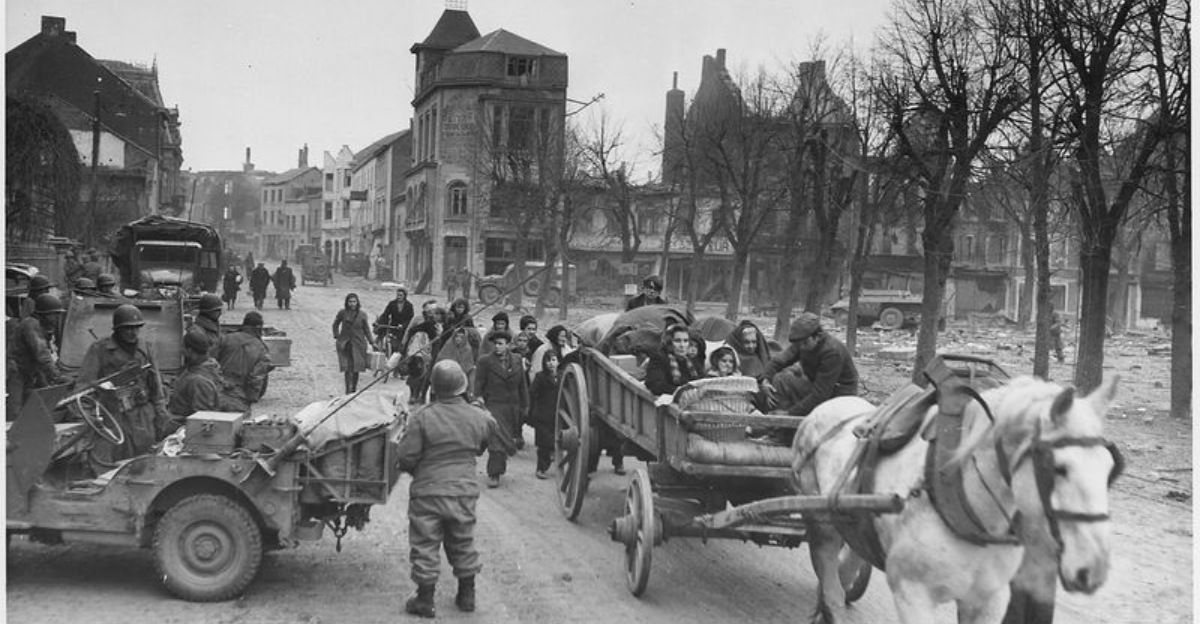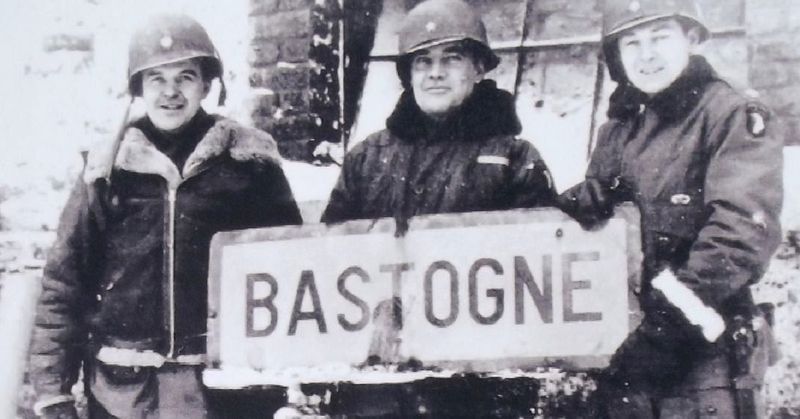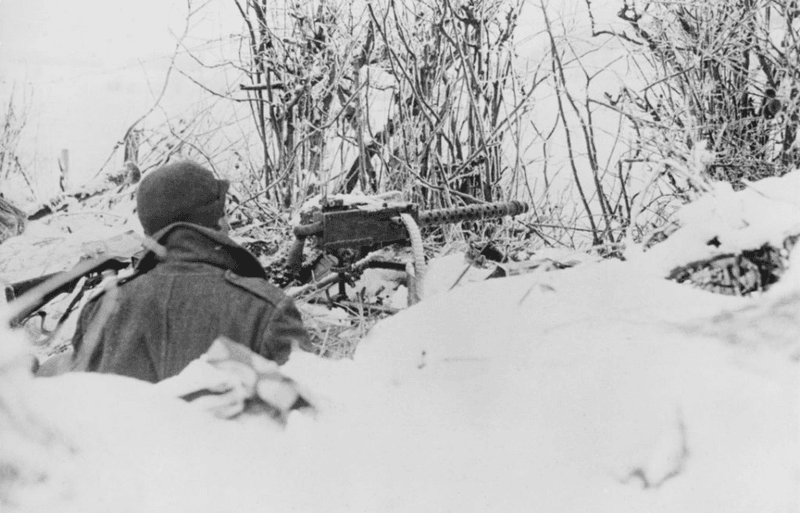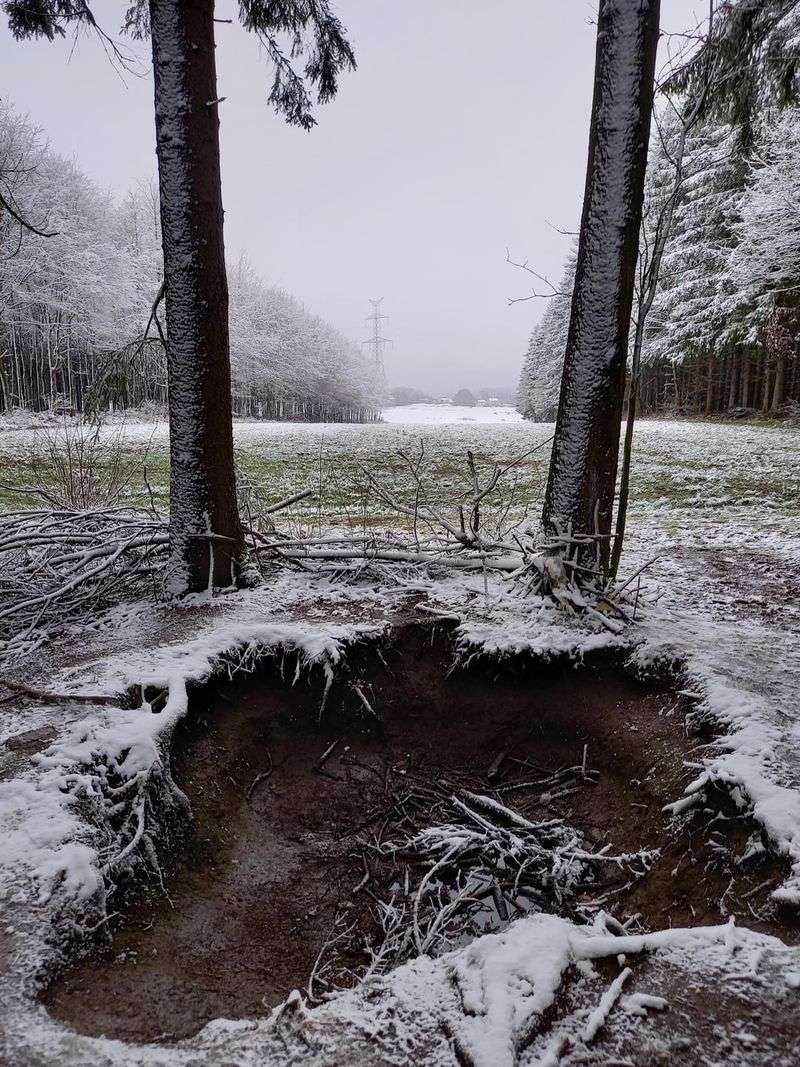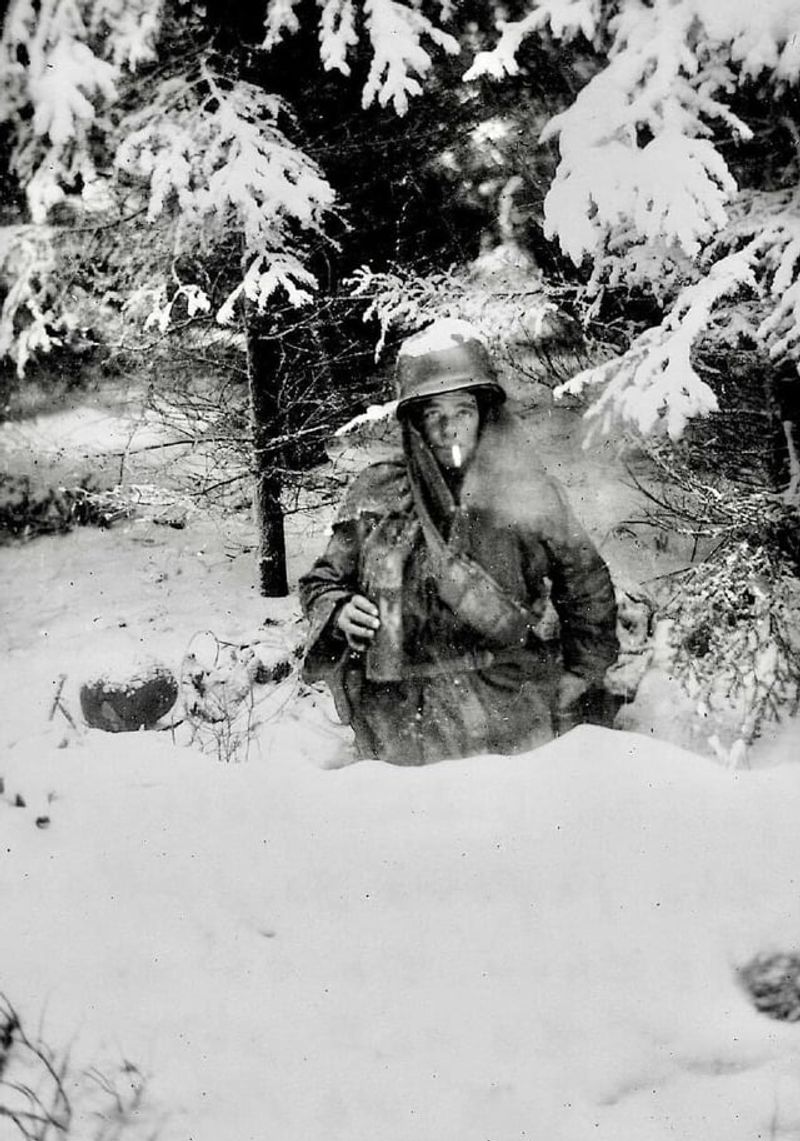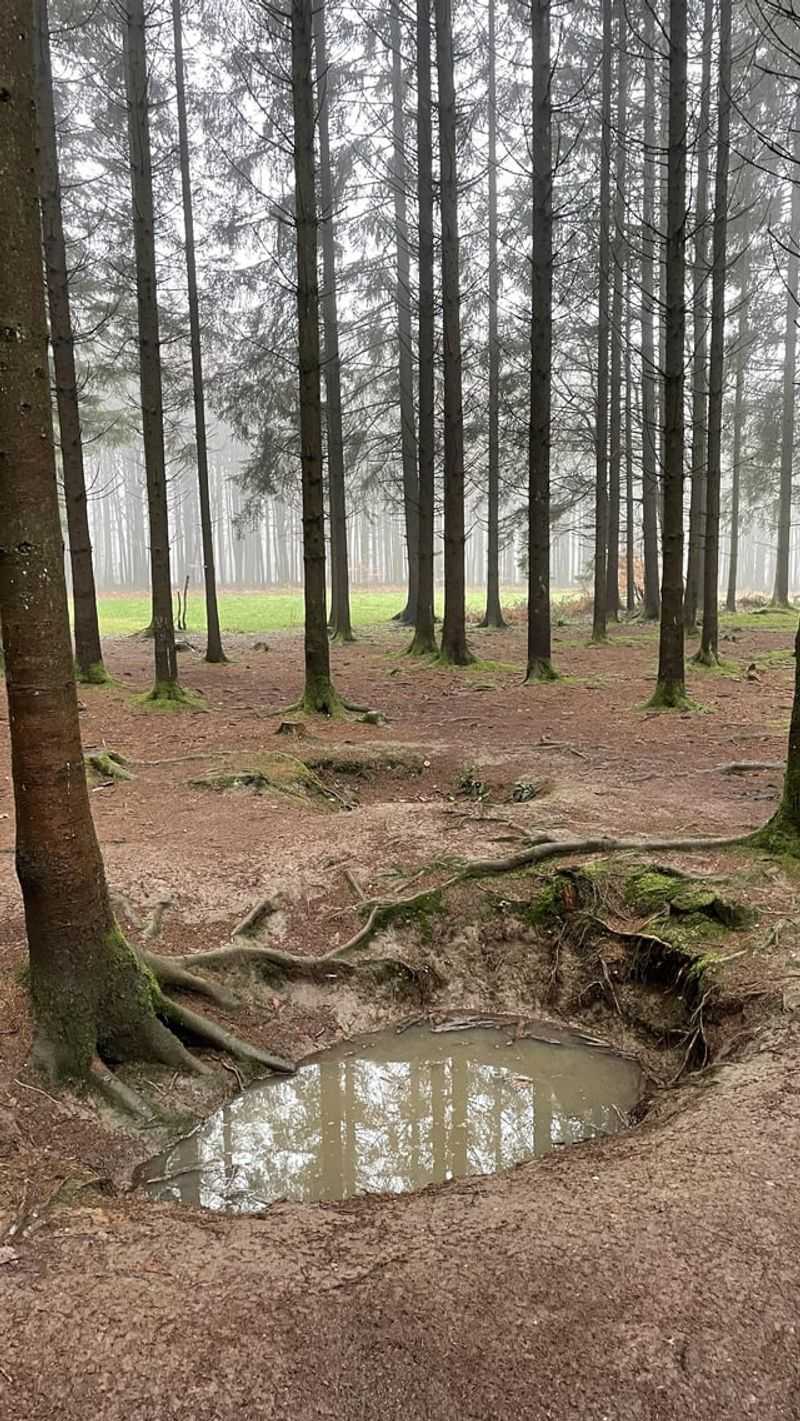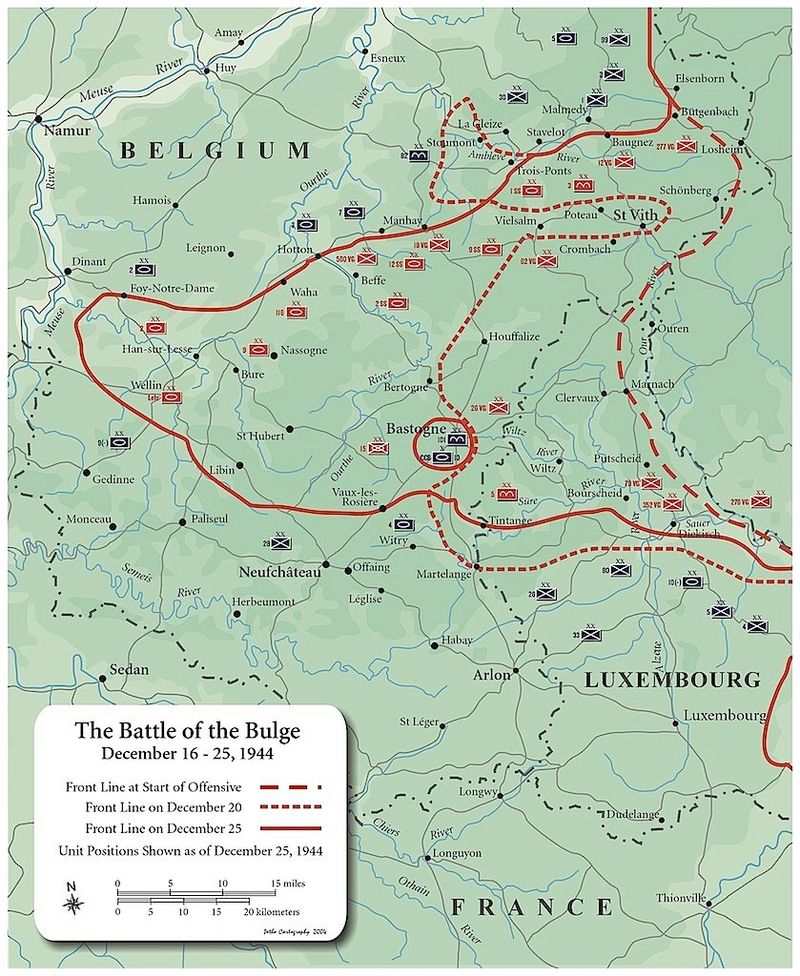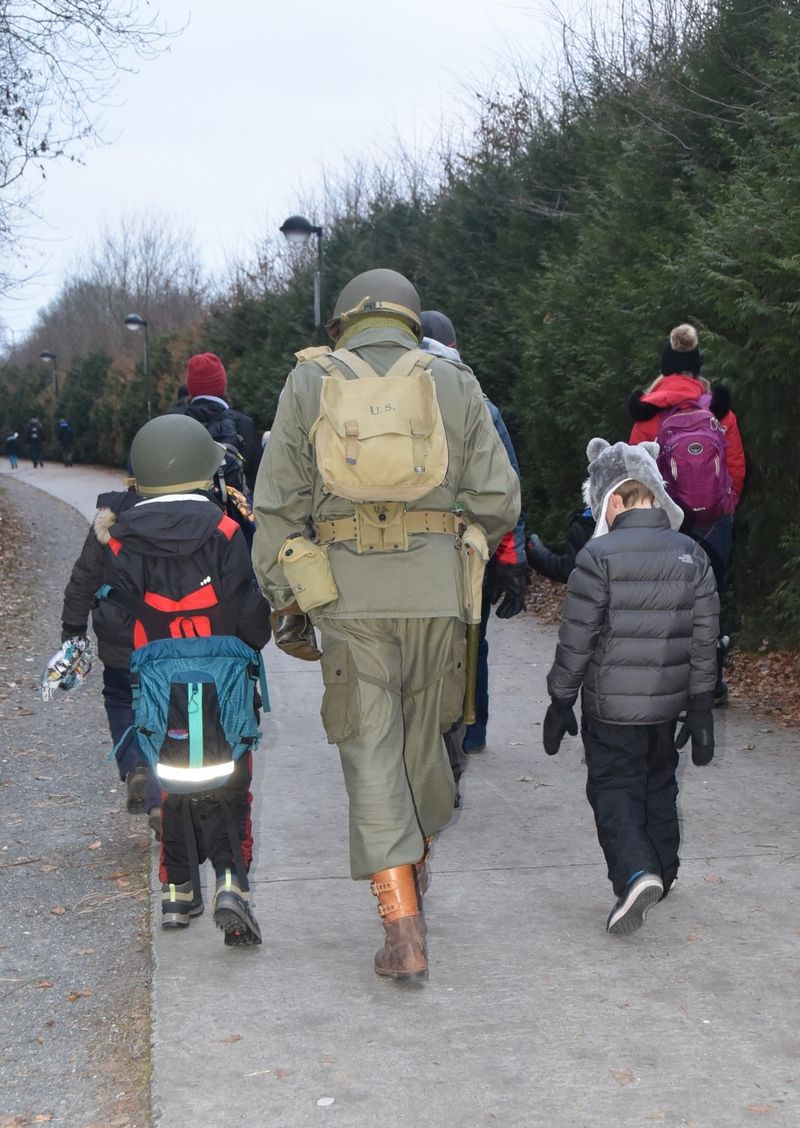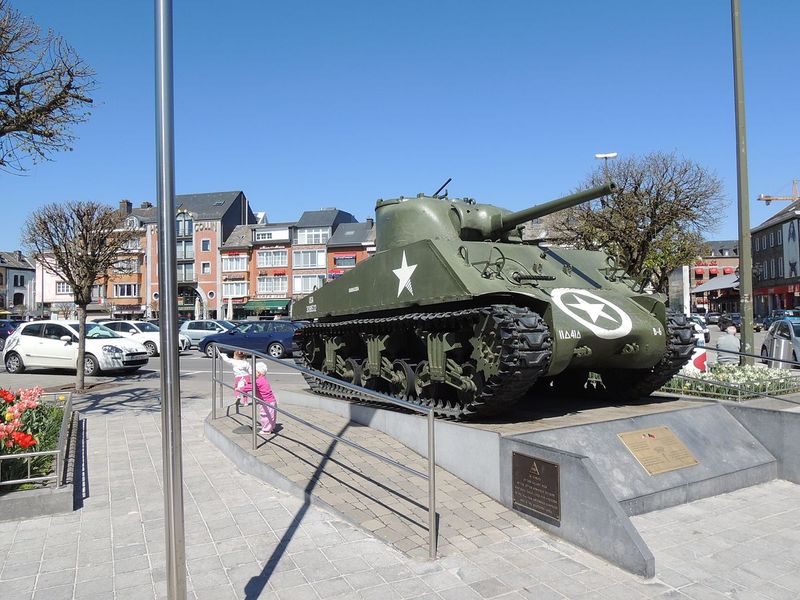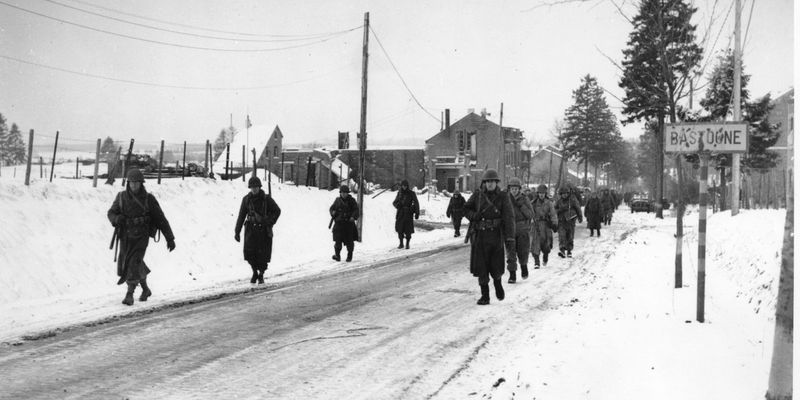The Battle of Bastogne, a pivotal conflict during World War II, left a profound impact on both the soldiers who fought and the civilians who lived through it.
Encircled by German forces in December 1944, American troops held their ground under dire conditions.
This blog post explores 14 lesser-known aspects of this historic battle, revealing the hidden truths about the American sacrifices and the town that now remembers them.
1. Then: Bastogne Was Completely Surrounded
In December 1944, a surprise German offensive encircled Bastogne, cutting off American troops who were outgunned and outnumbered. Troops faced harsh winter conditions, making survival a daily challenge. The situation was dire, with supplies dwindling and reinforcements delayed. Yet, the determination of the American soldiers held strong. The siege became a symbol of resilience, showing the grit and resolve under extreme pressure. Bastogne’s encirclement tested the limits of human endurance. The bravery displayed was extraordinary, marking a turning point in the battle. This siege echoes through history as a testament to courage.
2. Now: A Peaceful Belgian Town Remembering the Past
Today, Bastogne is a serene town in Belgium, far removed from its wartime past. Cobblestone streets and quaint cafés line the town, offering a peaceful retreat for visitors. War memorials dot the landscape, serving as solemn reminders of the battles fought here. Bastogne’s transformation from a battleground to a peaceful community is remarkable. The town embraces its history, ensuring that the sacrifices made are never forgotten. Walking through Bastogne, one can feel the intertwining of past and present, creating a unique atmosphere that honors those who came before.
3. Then: The 101st Airborne’s Heroic Defense
The “Screaming Eagles” of the 101st Airborne Division played a crucial role in defending Bastogne. Despite being outnumbered and low on supplies, the division held its ground. General McAuliffe’s famous reply to a German surrender ultimatum, “NUTS!”, became legendary. The soldiers’ unwavering spirit and tactical prowess were pivotal in maintaining control of the town. Their defense was not just about holding a position; it was a demonstration of resilience against overwhelming odds. The 101st Airborne’s actions in Bastogne are celebrated as a defining moment of bravery and ingenuity.
4. Now: The Bastogne War Museum
The modern Bastogne War Museum stands as a testament to the history of the Battle of Bastogne. It offers immersive exhibits and real artifacts, providing a comprehensive view of the events that unfolded. Personal accounts from soldiers and civilians bring the past to life, offering insights into the human experiences of war. The museum’s carefully curated displays serve both as educational resources and memorials to those who fought and died. It allows visitors to walk through history, understanding the complex emotions and strategic decisions of the battle.
5. Then: Foy Was a Fierce German Stronghold
The village of Foy, located just outside Bastogne, served as a formidable German stronghold during the siege. Heavily fortified, it posed a significant challenge to the American forces attempting to break the encirclement. The strategic position of Foy allowed German troops to launch attacks on American lines, making it a key focus in the battle. The fierce resistance encountered here highlighted the intensity of the conflict. Capturing Foy was crucial for the Allies, requiring determination and tactical prowess. The village’s wartime role is a reminder of the strategic complexities faced.
6. Now: Quiet Farmland With a Battlefield’s Echo
The fields of Foy are now serene, with farmland stretching into the horizon. Despite its peaceful appearance, remnants of war linger in the form of bullet holes and ruins. These silent witnesses tell stories of the violent winter of 1944. The contrast between past and present is stark, with history etched into the landscape. For visitors, Foy offers a contemplative experience, allowing a connection with the past. The land serves as a poignant reminder of the battle’s impact and the enduring scars of conflict. History lives on in these quiet fields.
7. Then: Soldiers Froze in Their Foxholes
During the Battle of Bastogne, American soldiers faced extreme cold, suffering from frostbite, trench foot, and hypothermia. The bitter winter conditions were as deadly as enemy fire. Soldiers huddled in snow-covered foxholes, struggling to stay warm and effective. The harsh weather added an additional layer of hardship to an already grueling battle. Despite these challenges, the troops’ resolve never wavered. Their endurance and commitment to the mission were admirable, reflecting the spirit of determination that defined Bastogne’s defenders. The frostbitten soldiers’ stories are a testament to human resilience.
8. Now: Memorial Foxholes in the Woods
Visitors to Bastogne can find preserved and reconstructed foxholes near the woods of Foy. These historical sites serve as tributes to the soldiers who endured extreme conditions during the siege. The foxholes offer a tangible connection to the past, allowing visitors to step back in time. Surrounded by forest, they stand as solemn reminders of the sacrifices made. The preserved foxholes provide a poignant experience, inviting reflection on the courage and fortitude of those who fought. They are a testament to the harsh reality of war and the human spirit’s resilience.
9. Then: A Costly Delay for the Allies
The German offensive in Bastogne created a significant delay for the Allies, stalling their advance for weeks. This strategic move by Hitler bought crucial time for the German forces. However, the cost was staggering, with over 19,000 American deaths resulting from the intense fighting. The delay demonstrated the high stakes and lethal nature of the battle. The resulting casualties underscored the human cost of warfare, with many soldiers paying the ultimate price. The Battle of Bastogne remains a poignant reminder of the complexities and sacrifices inherent in military strategy.
10. Now: Annual Bastogne Memorial Walk
Every December, Bastogne hosts an annual Memorial Walk, honoring the soldiers who fought in the battle. Participants retrace the steps of those who served, walking through the woods and countryside. The event serves as a living tribute, connecting past and present. It fosters a sense of community and remembrance, drawing locals and visitors alike. The walk provides a reflective journey, allowing participants to experience the terrain and conditions faced by soldiers. It’s an opportunity to honor their sacrifices and preserve the memory of their bravery for future generations.
11. Then: Patton’s Tanks Broke the Siege
General Patton’s Third Army played a pivotal role in breaking the siege of Bastogne. Racing against time, Patton’s tanks arrived just after Christmas, providing much-needed relief to the encircled troops. The arrival marked a turning point in the battle, lifting the spirits of the American soldiers. Patton’s strategic brilliance and determination were crucial in orchestrating the swift advance. The tanks became symbols of liberation and hope, representing the resilience and strength of the Allied forces. The successful breakthrough was a testament to military ingenuity and leadership.
12. Now: Tanks Preserved as Monuments
Bastogne features several tanks preserved as monuments, including Sherman and German Panther models. These displays serve as powerful reminders of the battle’s history and its impact. Positioned in town squares, the tanks symbolize both liberation and loss. They offer a visual connection to the past, inviting visitors to reflect on the technological and human aspects of warfare. The preserved tanks stand as tributes to those who fought, embodying the spirit of resilience and remembrance. They are historical icons, bridging the gap between past and present.
13. Then: Civilians Hid in Cellars
During the siege, Belgian civilians sought shelter in cellars, hiding from continuous bombardments. Many remained underground for weeks, facing scarcity of food and water. The dire conditions forced families to endure in cramped, dark spaces. The civilians’ resilience in the face of adversity was remarkable, reflecting the broader struggle for survival. Their experiences highlight the human cost of war, where non-combatants also bore the brunt of conflict. The courage and fortitude of these civilians is a testament to the indomitable spirit that persevered amidst chaos and danger.
14. Now: Civilians as Storytellers
Survivors and their descendants in Bastogne now play a crucial role in preserving the town’s history. By sharing wartime stories in schools, public talks, and publications, they ensure that the human side of the conflict is remembered. These personal accounts provide invaluable insights into the experiences and emotions of those who lived through the battle. The storytellers bridge generations, fostering understanding and empathy. Their narratives contribute to a collective memory, honoring the past while educating future generations. The legacy of Bastogne’s civilians endures through their voices.
